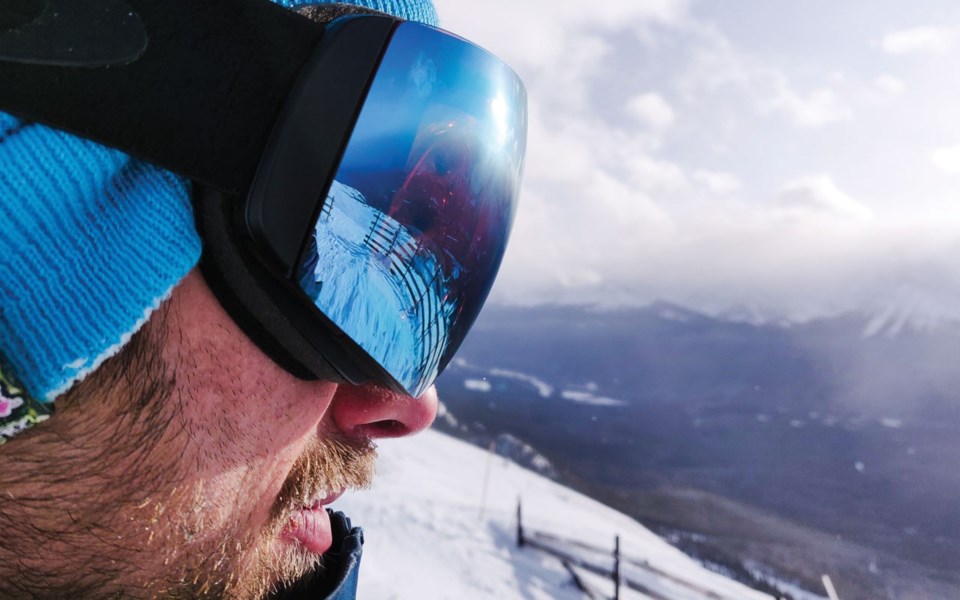"The only thing worse than being blind is having sight but no vision."
— Helen Keller
The most impressive evolutions of human organs is the eye. With origins over 500 million years ago, as a photoreceptive "eyespot" in single-celled organisms (which could only see the difference between light and dark), eyes can now distinguish objects, differentiate colours, clean and protect themselves from foreign objects and shift focus from your phone screen to the distant horizon in a third of a second.
Sight is a sense often taken for granted, especially in the current age of corrective lenses. Spectacles have been around for centuries. Contact lenses have been commercially available since the 1970s. And in the last few decades, refractive eye-surgery techniques have become safer, more affordable and produced more consistent results.
I inherited my father's terrible myopia as a child, so for most of my life I've had to wear corrective lenses just to get through the day. Contact lenses liberated my youth both socially (schoolyard reprieve) and physically (sports), but after about 20 years of full-time contact lens wear, I began to see the downside.
Having a polymer disc in and out of your eye every day is a very easy way to introduce infection. A strict hygiene regimen is essential to avoid bacteria finding its way in, which can result in messy ailments like conjunctivitis. Every time this happens it introduces a chance of causing more than superficial harm to your eyes. After many of these ocular mishaps at the twilight of my twenties, I finally shelled out for the corrective surgery and had tiny Implantable Collamer Lenses (ICL) permanently installed inside my eye balls.
The feeling of waking up and seeing the world with absolute clarity was as amazing as it sounds. Once my brain adjusted to the halos (this can be especially prominent when driving at night), there really weren't any drawbacks. I only had to watch the risk of a penetrating eye injury, as that could cause a collision between the implanted lens and my eye's natural lens, which could in turn result in a cataract. I obeyed the doctor's orders and carried on my life with 20/20 vision, skipping through the day with my new-found freedom and convinced that this was going to be my vision for the rest of my life.
It's been nine years since I had the ICL surgery and my vision has now unfortunately degraded a few points. I can still get through the majority of my day without trouble, but I do own glasses again (though they aren't the coke bottle lenses of my youth) which I wear when working on the computer, watching movies and driving the highway at night. I'd love to have 20/20 vision in the mountains again, but I don't want to take my glasses into those foggy, sweaty situations, let alone risk breaking them. And with ongoing allergy issues in my eyes, I refuse to go back to contact lens wear. That was the whole point of refractive surgery in the first place!
After a checkup at the local Whistler optometrist and explaining to her that I was struggling to make out details in the terrain while skiing and mountain biking, they recommended I try a pair of goggle inserts; thin plastic spectacles that clip inside your favourite ski or biking goggles. I figured it was worth a shot and ordered a pair of Oakley Flightdeck goggles through online optics manufacturer SportRx. This company has been making prescription lenses for other sport sunglasses brands for years and recently turned their attention toward the snowsports market with custom prescription inserts. In an effort to avoid obvious coke bottle appearance with the inserts, I chose a reflective lens.
Donning prescription goggles for the first time feels much like putting on a new pair of glasses; reduced peripheral vision and a strange feeling from the unfamiliar clarity. But it wasn't long before my vision adjusted to this and I began looking up at ski lines and noticing details that had been fuzzy for years. Skiing in low light and low visibility is a challenge whatever your visual acuity, but I was approaching these situations with more confidence knowing that I could see terrain changes as clearly as possible. My only gripe was that a thin line of fog would start to form in the middle of the insert lens when I was standing still, i.e., waiting in the lift lines, but this never hung around once I was moving on the chairlift or skiing. I'm going to experiment with ventilation and anti-fog treatment to see if I can eliminate that. The other thing is that more plastic inside the lens inevitably builds up more dust through static attraction, so wiping regularly with lens cleaner fluid is a must.
Skiers and snowboarders demand good optics and are willing to pay for it. New light-filtering lens technology such as Oakley's PRIZM and Smith's Chromapop (nevermind the marketing buzzwords, they're the same thing) give amazing definition in the snow, but that rose-coloured filter is only as good as your vision. If your vision is plagued with astigmatism or myopia/hyperopia of 0.50 or more, goggle inserts are worth checking out. I'm even excited to transfer my inserts into my mountain bike goggles this summer to see what difference they make on the dark trails of the Whistler Bike Park.
Our eyes have evolved this far. Don't shortchange them by suffering through poor vision in the mountains.
Vince Shuley likes to see where he's going. For questions, comments or suggestions for The Outsider email vince@vinceshuley.com or Instagram @whis_vince.




